High-yield corporate bond ETFs offer investors strong, growing dividends, and the potential for moderate capital gains as interest rates and economic conditions stabilize. Four high-yield corporate bond ETFs seem particularly strong right now.
The SPDR Portfolio High Yield Bond ETF (NYSEARCA:SPHY), with the highest 7.3% dividend yield, and lowest 0.05% expense ratio.
The First Trust Tactical High Yield ETF (NASDAQ:HYLS), with a more moderate 6.2% dividend yield, but the highest expected returns, with a yield to maturity of 9.1%.
The VanEck Fallen Angel High Yield Bond ETF (NASDAQ:ANGL) and the iShares Fallen Angels USD Bond ETF (NASDAQ:FALN). Both invest in fallen angels, or bonds recently downgraded from investment-grade to non-investment grade. Both funds have the strongest performance track-records, significantly outperforming since inception. Dividends are below-average, with ANLG yielding 5.3%, FALN 5.4%. FALN is a bit cheaper, with a 0.25% expense ratio compared to 0.35% for ANGL.
In my opinion, the three funds above are strong investment opportunities, and buys. Of these, FALN seems like the best, due to its strong performance track-record and time-tested strategy. SPHY does yield quite a bit more, a key consideration for many investors.
SPHY – Highest Yield, Lowest Expenses
SPHY is a diversified high-yield corporate bond index ETF. It is the most diversified of the bunch, with investments in almost 2,000 holdings from all relevant industry segments.
SPHY’s most important benefit is its strong, growing 7.3% dividend yield. Said yield is quite a bit higher than that of most bonds, including benchmark high-yield bond ETFs, and equities.
Data by YCharts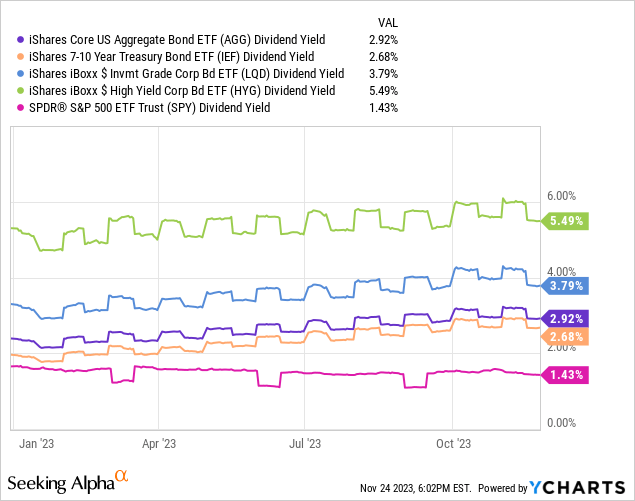
Said yield has grown by almost 20% these past twelve months, courtesy of Federal Reserve hikes.
Seeking Alpha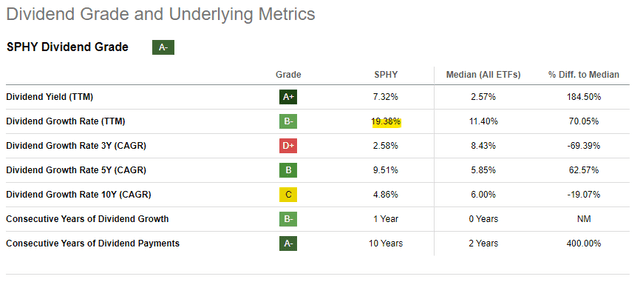
Further growth seems likely, as it takes a few years for higher interest rates to be reflected in bond fund dividends and yields: funds must wait until their older, lower-yielding bonds mature to replace them with newer, higher-yielding alternatives. Growth is somewhat uncertain, and ultimately dependent on future Fed policy and market conditions, however.
SPHY’s dividends and expenses compare favorably to those of its peers.
SPHY’s 7.3% dividend yield is quite a bit higher than average, higher than that of HYLS, ANGL and FALN, and higher than that of most of its peers. It is tied with several short-term high-yield bond ETFs, however.
Seeking Alpha – Table by Author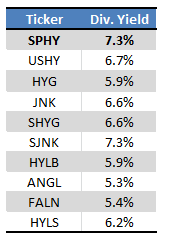
SPHY’s 0.05% expense ratio is lowest in its peer group.
Seeking Alpha – Table by Author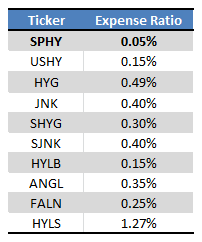
Due to the above, SPHY’s long-term performance is reasonably good, with the fund outperforming relative to most bonds and bond sub-asset classes these past ten years.
Data by YCharts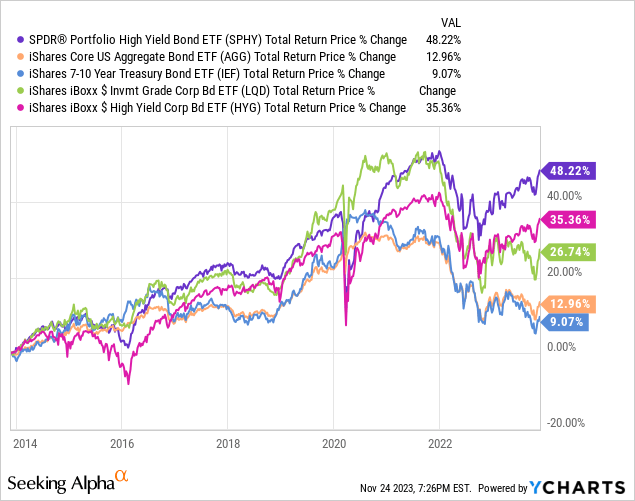
SPHY’s most important negative is its high credit risk, with the fund focusing on securities rated BB.
Fund Filings – Table by Author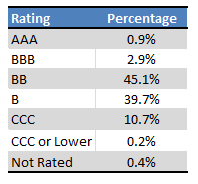
In my opinion, credit quality is low, but not significantly, excessively so. Expect high losses during downturns and recessions, as was the case in 1Q2020, the onset of the coronavirus pandemic. Equities saw higher losses, however.
Data by YCharts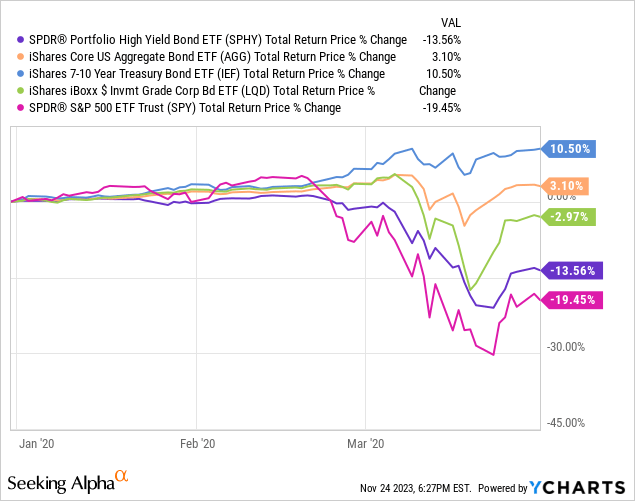
SPHY does not have any significant disadvantages relative to its peers; it is a very vanilla, well-rounded choice.
As a final point, SPHY focuses on bonds with comparatively low maturities and duration, as investors are loathe to extend long-term credit to riskier issuers. As interest rates are in flux, I see this as something of a positive, but not a significant one. More dovish or hawkish investors might disagree.
Fund Filings – Chart by Author
SPHY offers investors a strong, growing 7.3% dividend yield, highest in its peer group. Its expenses are lowest too, and the fund has no significant disadvantages or drawbacks. SPHY seems like a particularly compelling choice for income investors, and those looking for a well-rounded fund.
HYLS – Highest Yield to Maturity, But Expensive
HYLS is an actively-managed high-yield corporate bond ETF. It is a reasonably well-diversified fund, with investments in over 300 securities from most relevant industries. Diversification is reasonable, but lower than that of SPHY. It is modestly leveraged, with a 1.06x leverage ratio.
HYLS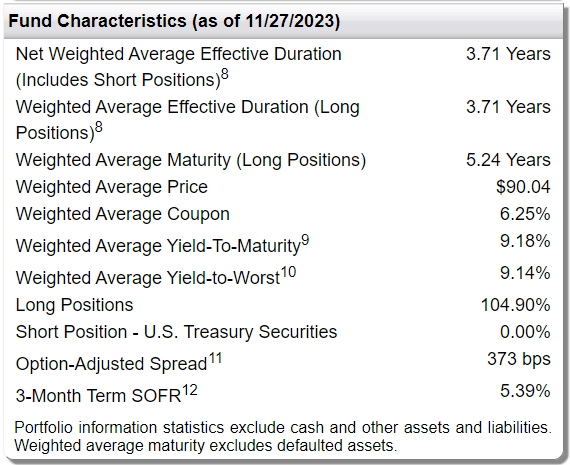
HYLS’s most important benefit and advantage relative to peers is its strong 9.2% yield to maturity. Said metric measures the expected returns from holding a bond (portfolio) until maturity, and includes both coupon payments and potential capital gains (from buying bonds below par). HYLS’s yield to maturity is higher than average, and higher than that of its large, well-known peers.
Fund Filings – Table by Author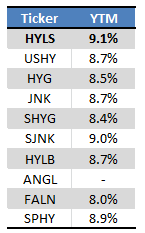
HYLS’s high yield to maturity should lead to the highest total returns in its peer group, assuming that all bonds are held to maturity, and no defaults. Bear in mind these are unreasonable assumptions, but the assumptions are the same for every fund.
HYLS compares unfavorably to its peers in several important ways.
The fund’s 6.2% dividend yield is slightly below-average, and quite a bit lower than that of SPHY and several other funds. Bear in mind, traditional dividend yield metrics are more backwards-looking, and generally less reflective of the dividends and returns that investors should expect moving forward than yield to maturity.
Seeking Alpha – Table by Author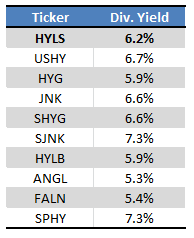
Dividends have seen very lackluster growth, and are down 14% these past twelve months. Most bond funds have seen very strong growth due to Fed hikes, including SPHY, ANGL, and FALN. Changes in positioning and leverage explain these issues.
Seeking Alpha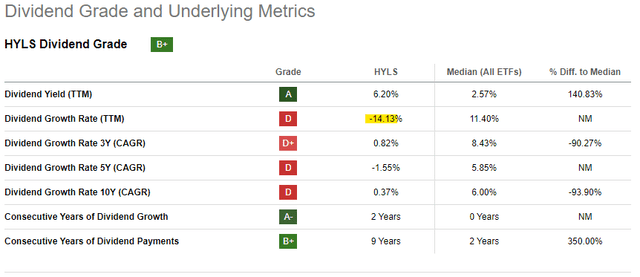
The fund’s 1.27% expense ratio is much higher than average, and higher than that of SPHY, ANGL, and FALN.
Seeking Alpha – Table by Author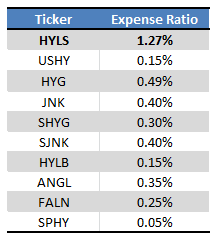
Credit quality is a bit worse than average, with greater allocations to bonds rated CCC. Allocations to investment-grade bonds are also higher, however.
HYLS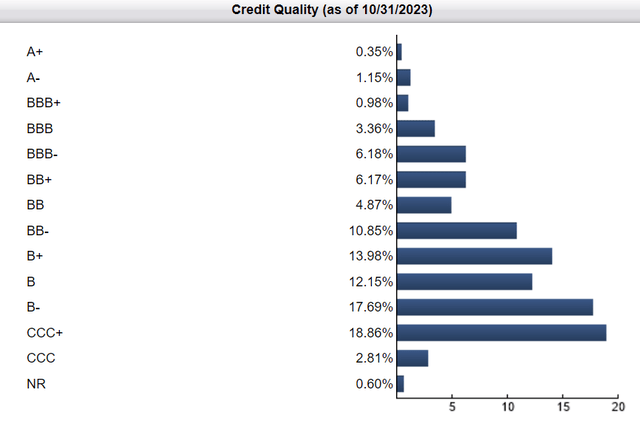
Considering the above, expect high losses during downturns and recessions. These could be higher than average, due to the fund’s significant investment in CCC-rated bonds, although that was not the case during early 2020, the most recent recession.
Data by YCharts
HYLS’s fundamentals seem all over the place, but long-term performance seems reasonably good, with the fund outperforming relative to most bonds and bond sub-asset classes since inception.
Data by YCharts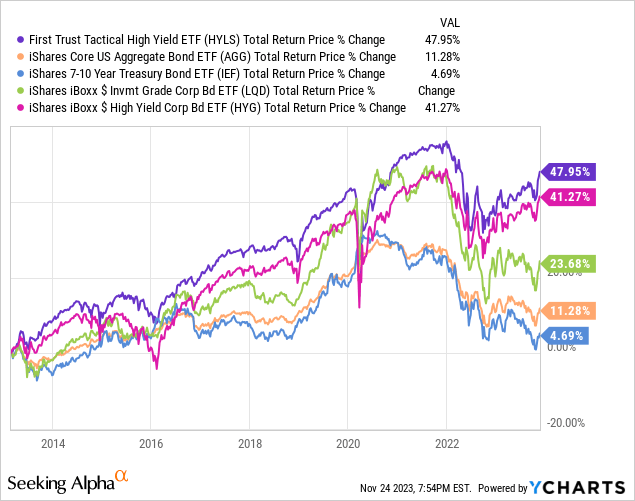
It has matched the performance of SPHY, however.
Data by YCharts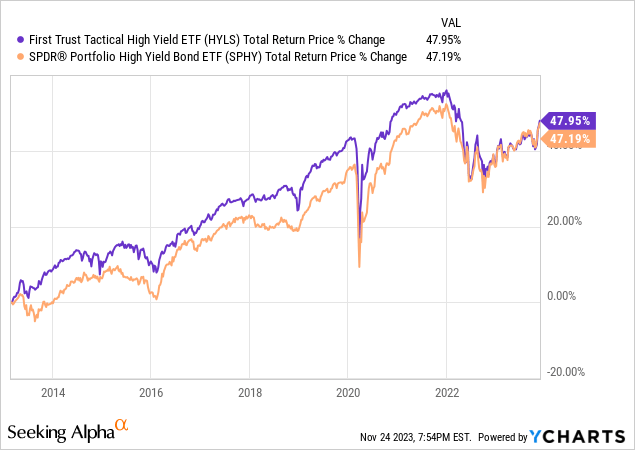
Finally, it sports a duration of 3.8 years. A bit higher than SPHY, but not significantly so.
Fund Filings – Table by Author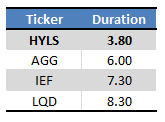
HYLS offers investors a strong 9.1% yield to maturity, highest in its peer group. Expenses are the highest too, at 1.27%, with the fund suffering from several other disadvantages and negatives too. Do bear in mind, yield to maturities are a forward-looking metric, and of particular importance to investors moving forward.
ANGL and FALN – Fallen Angel ETFs
ANGL and FALN both invest in fallen angels, or bonds recently downgraded from investment-grade to non-investment grade. So, a bond with a BBB rating downgraded to BB would quality as a fallen angel.
Fallen angels tend to outperform due to structural issues or peculiarities in bond markets. In simple terms, some institutional investors are constrained from holding non-investment grade bonds in their portfolios, so are forced into selling any bond downgraded from investment-grade to non-investment grade. These were fine before, but not after their downgrade. Forced selling leads to abnormally low prices and high yields for these securities, which leads to outperformance as conditions settle.
As an example of the above, some of the larger holdings for both funds in prior years were Carnival Corporation (CCL), a cruise ship company, bonds. CCL’s bonds were downgraded during the pandemic, for obvious reasons. Bond prices plunged, yields skyrocketed. ANGL and FALN bought the bonds cheap in 2020, and saw significant capital gains and income as the pandemic subsided.
Due to the above, fallen angels have significantly outperformed for decades, and for most relevant time periods.
FTSE Russell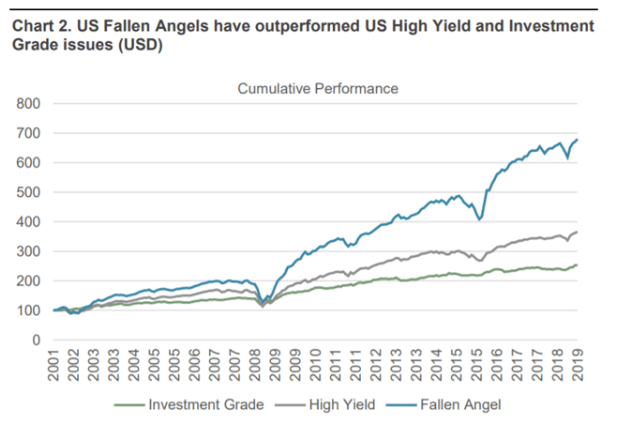
as have ANGL and FALN:
Data by YCharts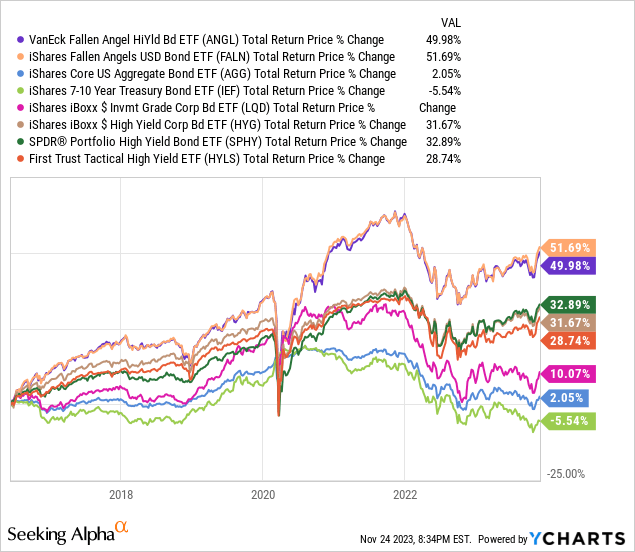
From what I’ve seen, ANGL and FALN are the best-performing high-yield bond ETFs in the market, and by quite a wide margin.
Both funds offer investors access to a strong, proven, best-performing investment strategy. This is their most important benefit, and key advantage relative to peers.
Another, smaller advantage is their slightly stronger credit quality. Both funds focus on bonds rated BB, as these are the most common fallen angel rating (quite common for investment-grade bonds to be downgraded to BB).
FALN’s credit ratings.
FALN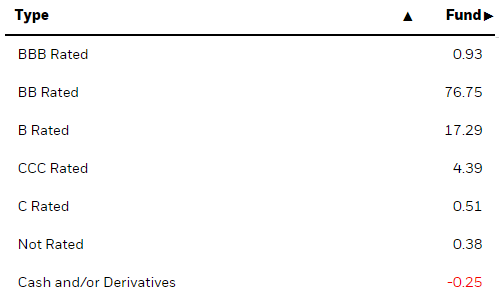
ANLG’s credit ratings.
ANGL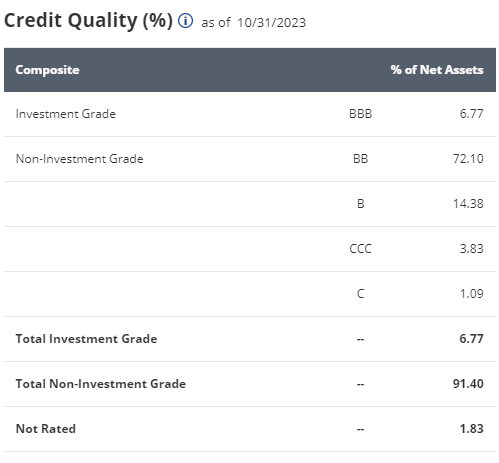
Due to the above, both funds should see slightly below-average losses during downturns and recessions. Losses seemed about average during early 2020, although both funds did recover from these slightly quicker.
Data by YCharts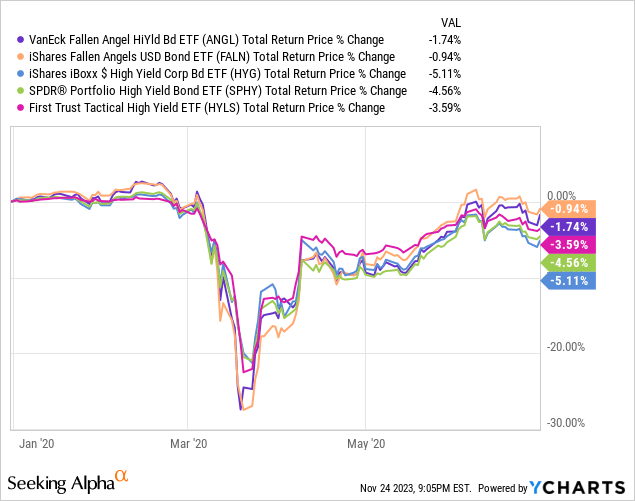
Most important disadvantage for both funds are their comparatively low 5.3% – 5.4% dividend yields. Dividends are higher than that of most bond funds, but lower than those of most high-yield bond funds, including SPHY and HYLS.
Fund Filings – Table by Author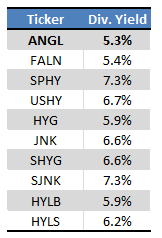
Finally, duration for both funds is a bit lower than average for a bond fund, but a bit higher than average for a high-yield bond fund. Although this potentially impacts their performance relative to both SPHY and HYLS, duration is not particularly important to these funds, or to their investment thesis. In my opinion at least.
Fund Filings – Table by Author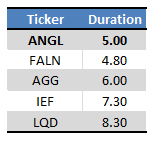
ANGL and FALN have the strongest performance track-records in their peer group. Investing in fallen angels has worked in the past and will, I believe, continue to work in the future.
As a final, quick point, FALN is a bit cheaper than ANGL, with a 0.25% expense ratio versus 0.35%. As there are no other important differences between the funds, I prefer FALN over ANGL.
Conclusion
High-yield corporate bond ETFs offer investors strong, growing dividends, and the potential for moderate capital gains as interest rates and economic conditions stabilize. Four ETFs stand out.
SPHY offers a particularly high 7.3% dividend yield, with no significant negatives or downsides.
HYSL offers a particularly high 9.1% yield to maturity, a more forward-looking dividend metric. It is quite expensive, sporting a 1.27% expense ratio.
ANGL and FALN have the strongest performance track-records in their peer groups, and by quite a large margin. Dividend yields are below-average, from 5.3% – 5.4%.
In my opinion, the four ETFs above are strong investment opportunities, and buys.
Read the full article here


